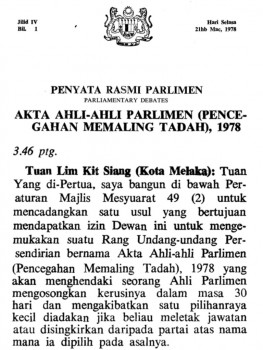Media Statement by MP for Bangi and DAP Assistant National Political Education Director, Dr. Ong Kian Ming on 30 June 2020
Myth Busting Part 1
There is a narrative which has been perpetuated for many years that the majority of the Malay community still live in rural areas and that the urban areas are dominated by the non-Malays, especially the Chinese. This may have been true in 40 years ago but the demographic landscape in Malaysia has changed significantly since the 1980s. Since this issue has been in the news lately, I want to debunk this narrative or bust this ‘myth’ using the latest available statistics.
Fact 1: The majority of Malays live in urban areas in Malaysia
According to figures from the Department of Statistics Malaysia, 75% of Malaysia’s population lived in urban areas in 2016.
Out of this 75%, a majority or 56% are Bumiputeras. In fact, the number of Bumiputeras who live in urban areas outnumber those who live in rural areas by 2 to 1. In 2016, 13.2m Bumiputeras lived in urban areas compared to only 6.2m in the rural areas. In other words, almost 70% of Bumiputera community (of which the Malay community is the majority) live in urban areas.
These figures, in 2020, would definitely show an increase for the % as well as the number of Bumiputeras who live in the urban areas.
Of course, Bumiputeras form the majority of rural dwellers but the larger point here is that the Bumiputera Community, especially the Malay community, is overwhelmingly an urban community.
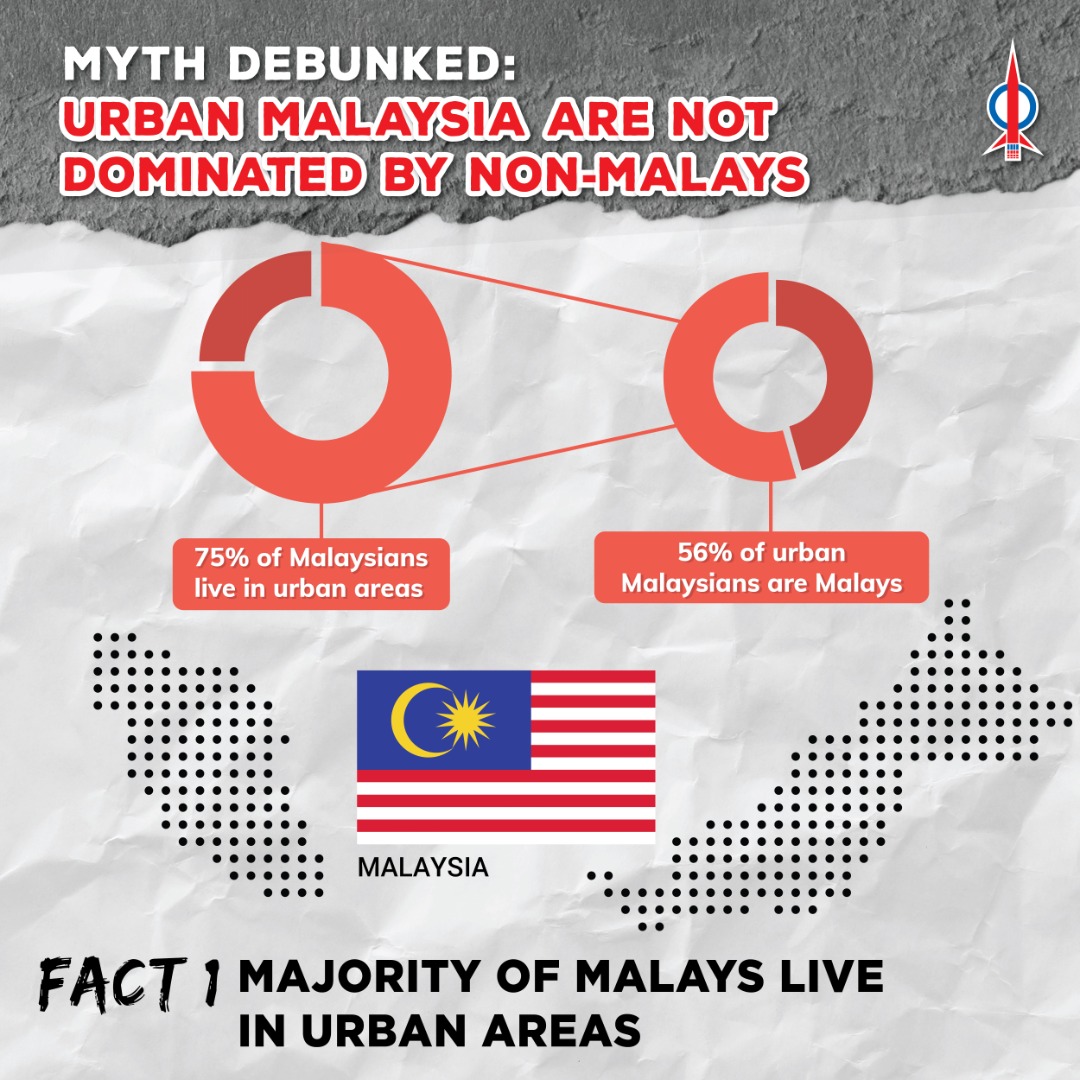
This leads me to the 2nd fact to highlight.
Fact 2: The majority of the largest parliament seats are located in urban areas with Malay voters being the plurality or the majority
Some of those who want to perpetuate the myth that Malays are a rural community often also want to perpetuate the myth that nearly all of the large parliamentary constituencies in the urban areas are Chinese majority constituencies.
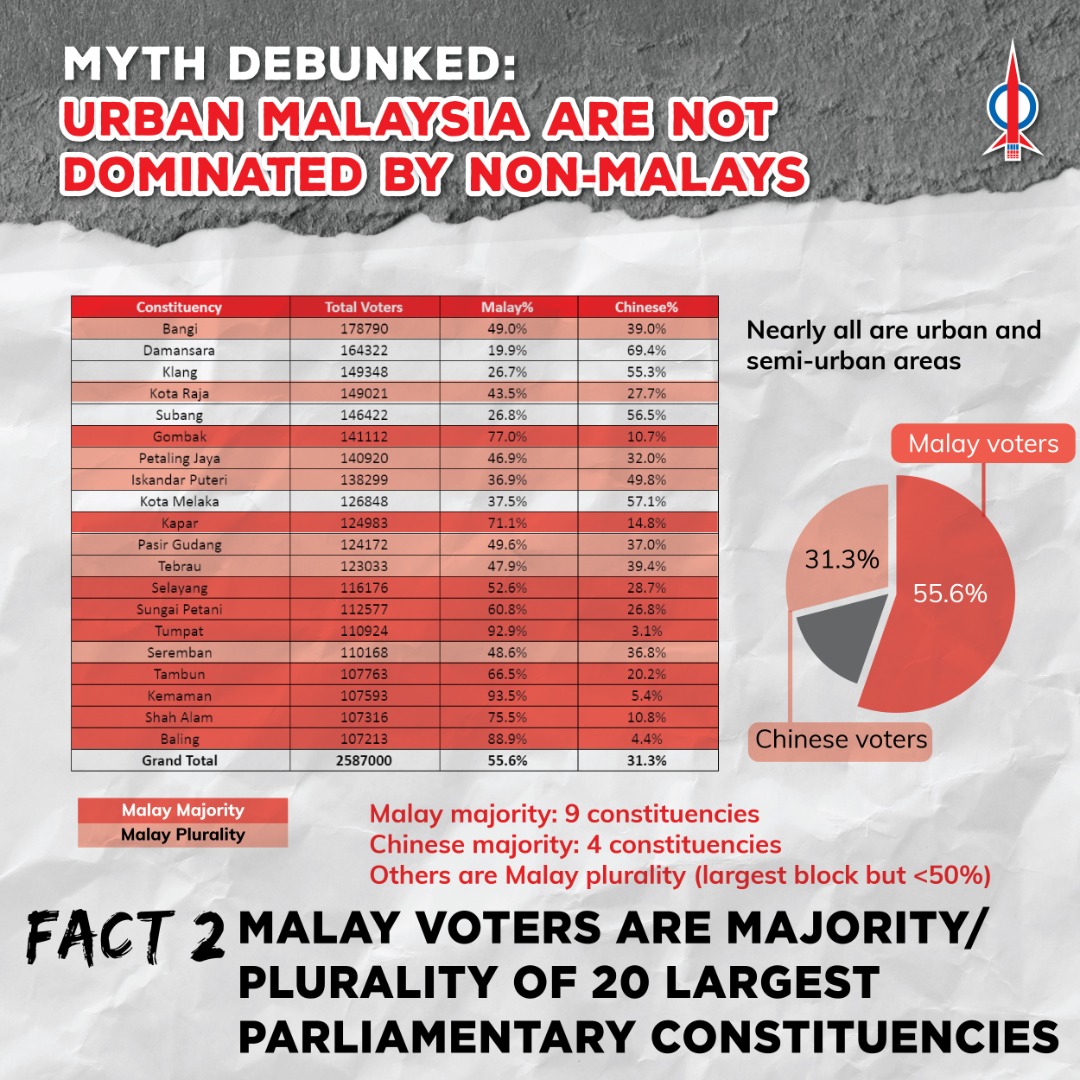
40 years ago, it was the case that the parliamentary constituencies with the largest number of voters were Chinese majority constituencies located in Kuala Lumpur. This is no longer the case. Table 1 below shows the 20 largest parliamentary constituencies using figures from the 2018 general election. Only 4 are Chinese majority. 9 are Malay majority. 7 are Malay plurality (Malays form the largest block of voters but less than 50%) including my own constituency of Bangi. Nearly all of these seats are urban or semi-urban seats (with the exception of Baling and perhaps Tumpat and Kemamam). The average % of Malay voters in these 20 seats is 55.6% compared to an average % of 31.3 of Chinese voters.
If the Malay community were to register as voters where they live rather than going back to their kampungs to vote, perhaps as many as 15 out of the top 20 parliament seats in Malaysia would be Malay majority seats in urban areas.
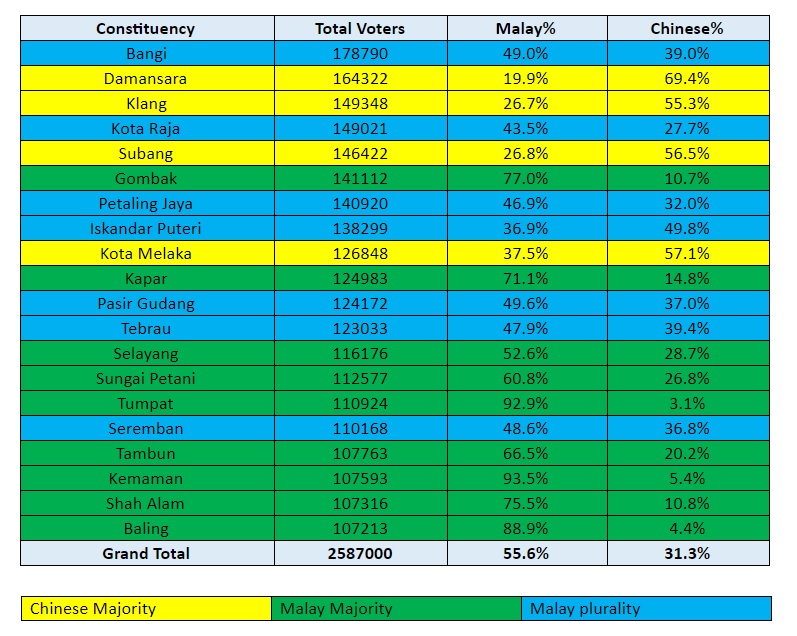
Fact 3: There are more Malay rich households than Chinese rich households but Malays also the majority of the B40 (including the urban poor)
One statistic which may surprise many is that there are more Bumiputera households earning more than RM10k a month compared to Chinese households. According to Khazanah Research Institute’s State of the Household Report first published in 2014, there were 280,000 Bumiputera households with monthly incomes of more than RM10,000 compared with 254,000 Chinese households and 45,000 Indian households. (Figure 1 below) These figures were obtained from the 2012 Household and Income survey collected b the Department of Statistics, Malaysia (DOSM).

Many Bumiputera, especially Malay households, are in the T20 category. This is part of the professionalization and urbanization experience of the Malay community over the past 4 decades and this trend will continue as more Malays move to the urban areas and as more Malays obtain higher education qualifications (a subject for another post) and have access to better job opportunities. Many high paying jobs, whether in the civil service, GLCs or in non-GLC listed companies are held by Malay professionals.
Of course, it is also true that the majority of the B40 group are from the Bumiputera community. According to figures collected by DOSM for the 11th Malaysian Plan, the Bumiputera community comprised 73.6% of households in the B40 category. At the same time, it is also worth highlighting that Chinese households comprise 17.5% of the B40 category and Indian households 7.5%. The impression that all Chinese are rich “towkays” is clearly a mistaken one.
Furthermore, if we can breakdown the Bumiputera community into smaller segments, I am confident that we would find a larger % of the Sarawakian and Sabahan Bumiputera communities which are more rural and also have lower household incomes compared to the Malay community.
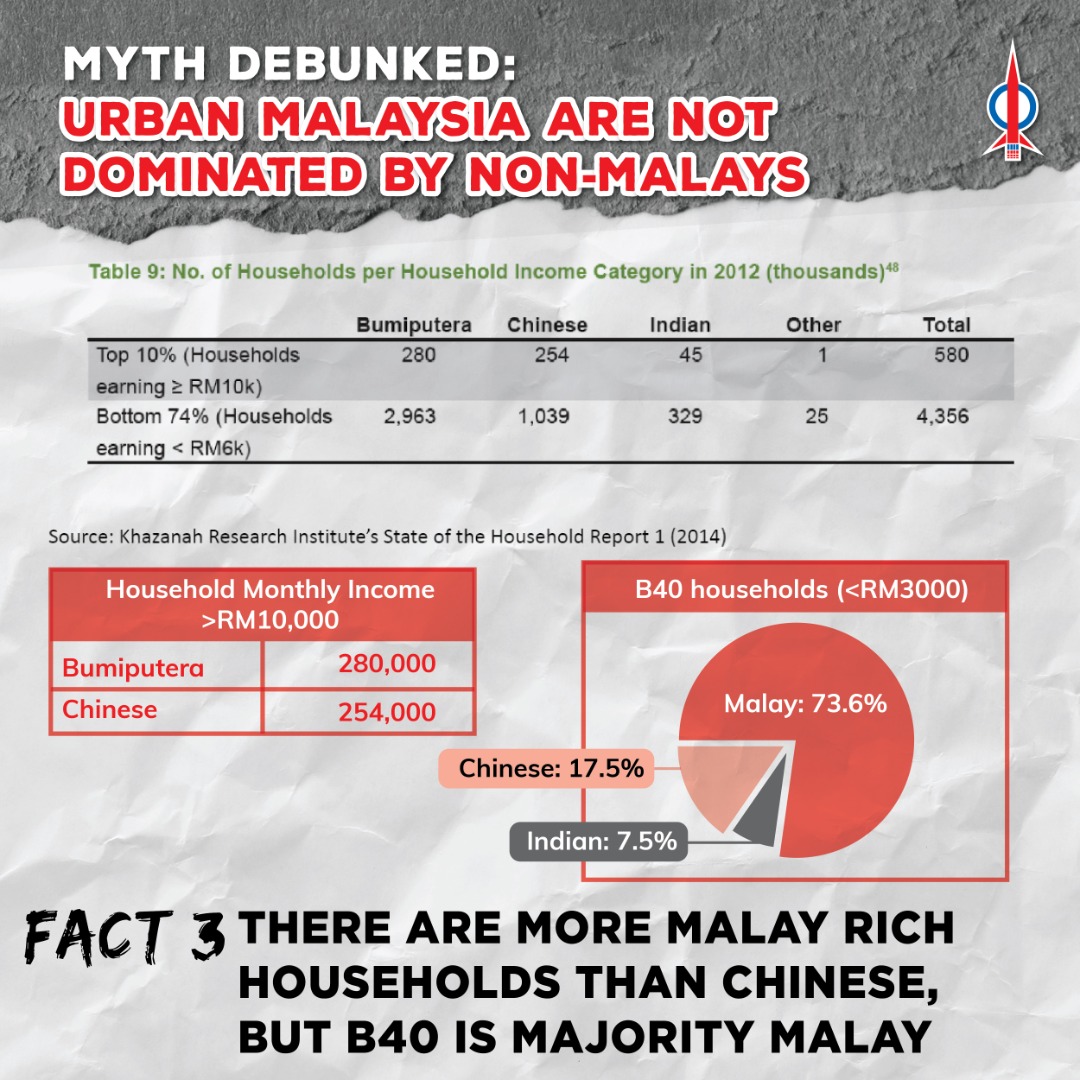
Why is it important to debunk these myths?
Firstly, public policy must be designed based on updated statistics and facts, not based on mistaken narratives. For example, if govt policy were to be aimed at helping the marginalized Bumiputera communities, it would be a mistake to focus the majority of resources in the rural areas since the majority of Bumiputeras actually live in the urban areas. This is also why we need to update our measures of poverty, especially urban poverty, to properly capture the Bumiputera households which fall into this category and not pretend that we do not have any urban poor using outdated statistical measures.
Secondly, believing these myths would lead one to ignore the significant progress made in the creation of a vibrant Bumiputera middle class in Malaysia over the past decades.
Thirdly, we need to understand these facts in order to know what policies have succeeded and what policies have failed in the past. For example, would more middle and high income households in the Bumiputera community have been created if there was less crony capitalism and more transparency in the creation of capable Bumiputera entrepreneurs and professionals? Only with an honest appraisal of the facts and figures (and not relying to myths and mistaken narratives) can we answer these questions and find the right policy responses.
Dr. Ong Kian Ming,
Member of Parliament for Bangi and DAP Assistant National Political Education Director.
1] https://www.statista.com/statistics/455880/urbanization-in-malaysia/
[2] The DOSM figures does not give a breakdown between the different Bumiputera communities. If this was disaggregated to the Malay, Sarawak Bumiputera and Sabah Bumiputera community, the % of the Malay community who live in urban areas would almost certainly increase.
[3] http://www.rurallink.gov.my/wp-content/uploads/2016/11/1-DATA-ASAS-MALAYSIA.pdf
[4] https://www.dosm.gov.my/v1/uploads/files/7_Publication/Technical_Paper/Kolokium_Statistik/2015/21.%20B40%20What%20StatisticsG%C3%87%C3%96%20Say.pdf



